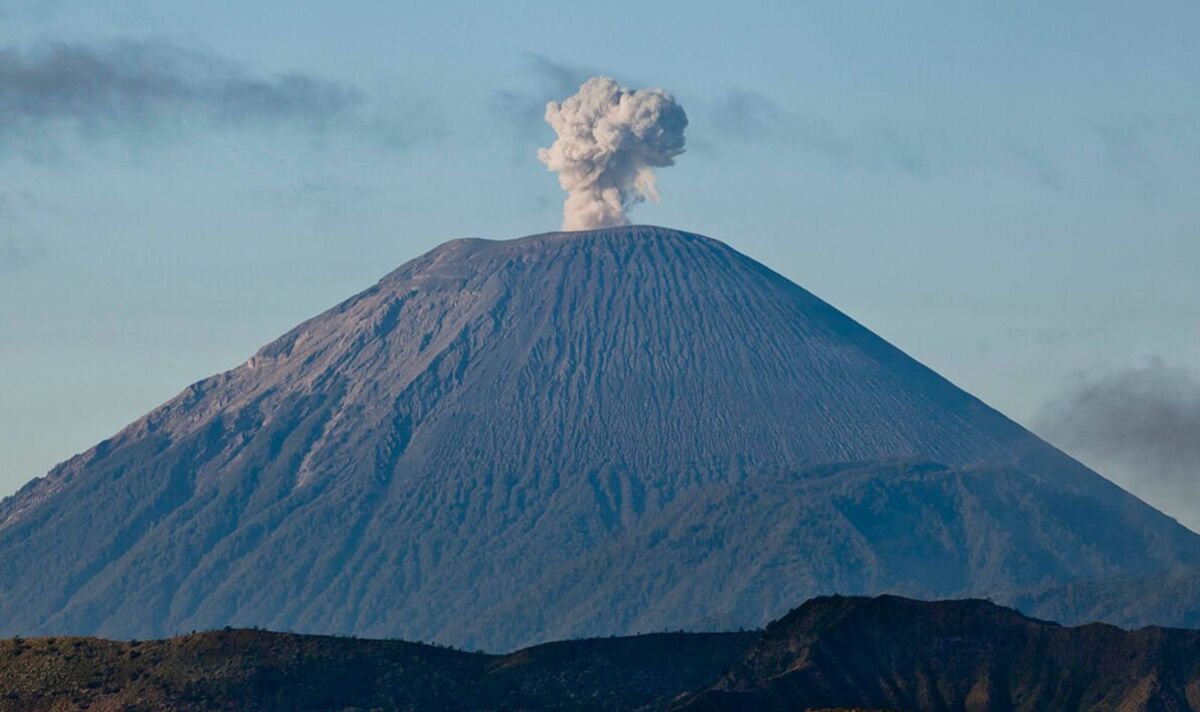The Earth is home to around 1,350 active volcanoes, from Iceland to Japan, New Zealand to the US.
Each regularly shows signs of activity, though some blow their lids more often than others — and more violently.
This is true of Mount Rinjani, the second-highest volcano in Indonesia and the highest point in the Indonesian province of West Nusa Tenggara.
In volcanic terms, Rinjani is a relative baby, with its current form created in 1257 when Mount Samalas erupted.
This doesn’t mean that Rinjani is any less formidable than its ancient counterparts, for the caldera had one of the largest eruptions in the last millennium.
Now, the educational channel GeologyHub predicts that Rinjani “could erupt in 2024”.
Although Rinjani has only erupted about once a decade in the last 100 years, it did show several signs of unrest in 2023.
Experts believe many of these seismic activities were caused by a body of magma deep inside the volcano.
If true, this magma could eventually rise to the caldera’s surface and “produce a moderately explosive Strombolian eruption” at some point this year.
Eruptions at Rinjani are often disastrous and cause much in the way of infrastructural and human damage. In 2016, an unexpectedly powerful explosion from Barujari at Rinjani prompted the evacuation of over 1,000 tourists.
Ash was sent rocketing two kilometres into the sky and covered nearby regions. While similar eruptions wouldn’t ordinarily be too much cause for concern, because Rinjani doubles up as a national park, it is often filled with visitors.
Another eruption occurred the year before when towns and farmland across three Indonesian islands were blanketed in dense ash.
Within days, airports on all three islands had closed their airspace, leaving thousands stranded and damaging much of the natural environment.
Rinjani isn’t Indonesia’s largest volcano. That title goes to Mount Tambora, an absolute behemoth whose 1815 eruption rivals Rinjani’s as one of the largest and most destructive volcanic events.
It recorded a 7 on the volcanic explosivity index (VEI) and ejected as much as 45km3 or 11 cubic miles of dense rock equivalent material into the atmosphere.
While the volcano’s eruption reached its peak on April 10, 1815, an increase in steam and small phreatic eruptions took place afterwards for up to three years.
The ash from this event spread around the world and lowered global temperatures to the extent that 1816 became known as the Year Without a Summer, and a brief period of climate change saw global harvests fail.
